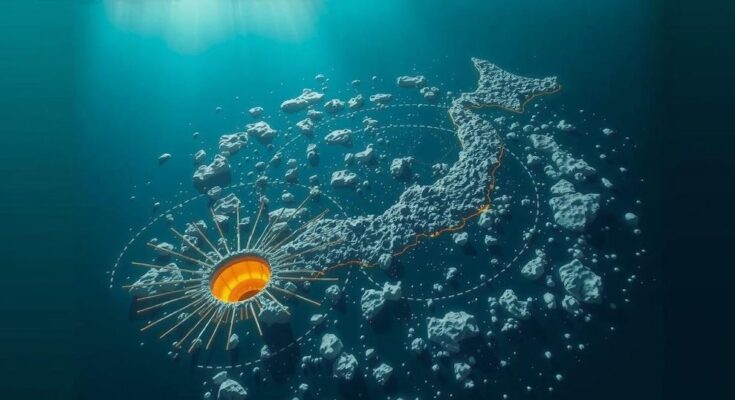An underwater earthquake of magnitude 6 occurred off Japan’s coast on November 17 at a depth of 10 km, prompting reports of tremors felt in Amami and Kagoshima. Six aftershocks were recorded, and coastal regions may experience fluctuations in sea levels for up to three hours.
On November 17, an underwater earthquake registering a magnitude of 6 struck off the northeastern coast of Amami Oshima, Japan, occurring at a depth of 10 kilometers. According to reports from Metro and the Japan Meteorological Agency, the tremors were perceptible in the cities of Amami and Kagoshima, where the intensity reached 2-3 points. Subsequent seismic activity was noted, with additional aftershocks occurring within the following five hours, ranging in magnitude from 2.4 to 6. Furthermore, significant fluctuations in sea levels are predicted for coastal areas, particularly along the Tanegashima and Yakushima regions as well as the Amami and Tokara islands for a duration of 2-3 hours.
Japan is situated on the Pacific Ring of Fire, where tectonic plate boundaries frequently trigger seismic activities including earthquakes and tsunamis. The nation has sophisticated monitoring systems in place, enabling authorities to promptly assess and respond to such natural events. Earthquakes, particularly underwater quakes, can lead to tsunamis and significant changes in sea level, affecting coastal communities. Understanding the potential implications of these seismic activities is critical for disaster preparedness in the region.
In summary, the recent underwater earthquake near Japan has emphasized the persistent seismic activity in this region. With a magnitude of 6 and multiple subsequent aftershocks recorded, the effects on local communities and coastal areas will require ongoing monitoring. The potential for sea level changes also underscores the necessity for heightened preparedness among residents and response teams alike.
Original Source: unn.ua




